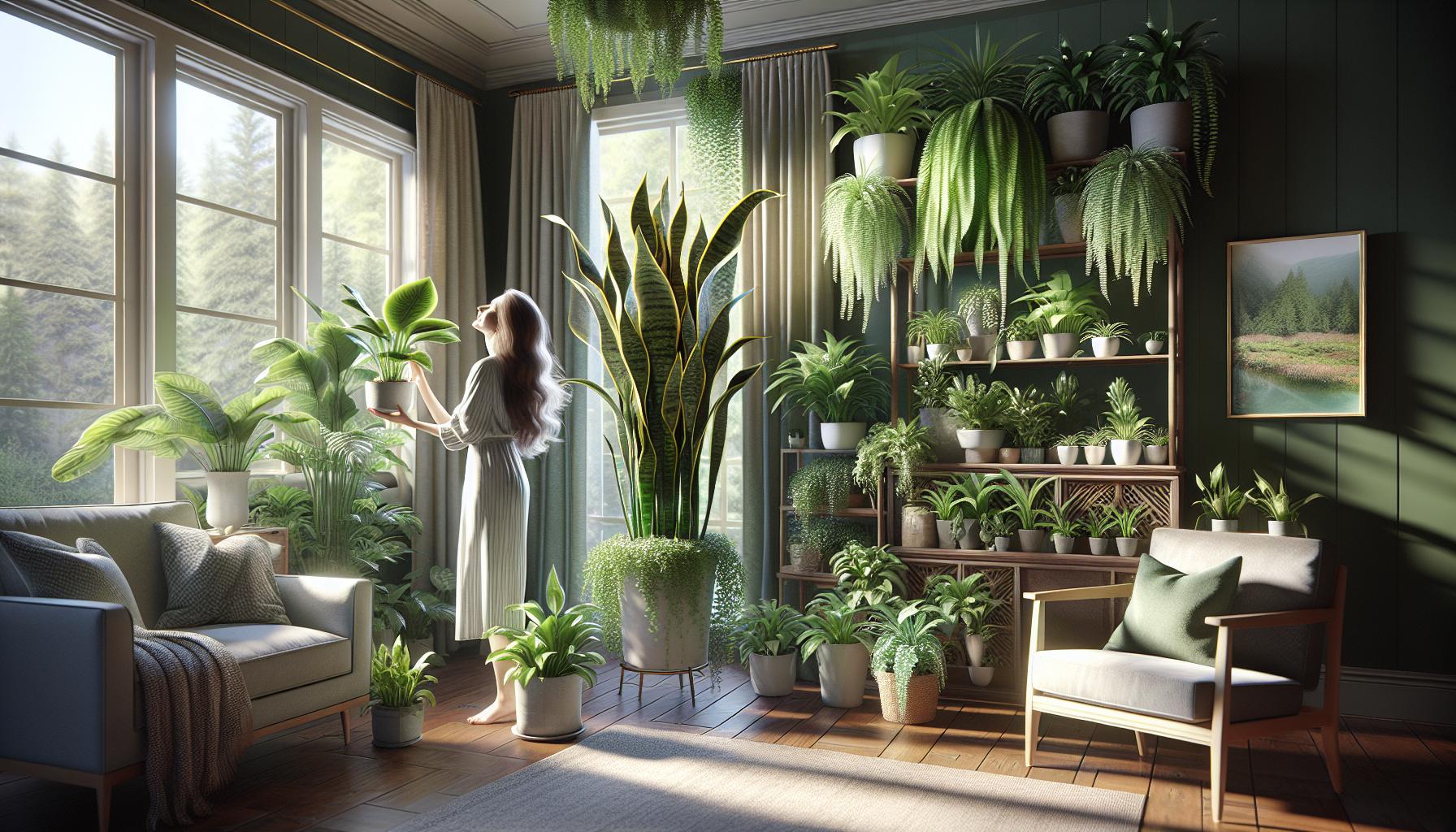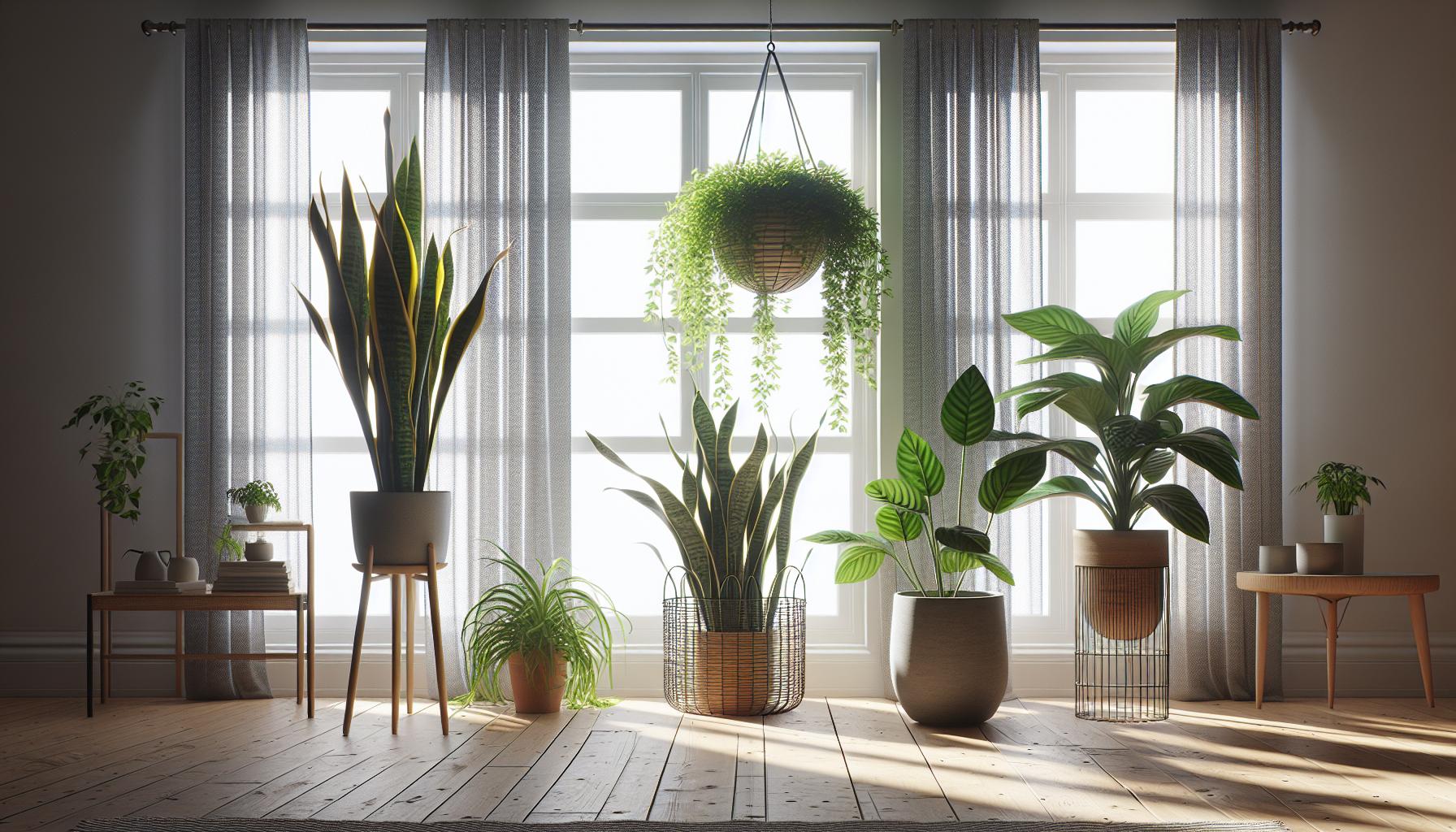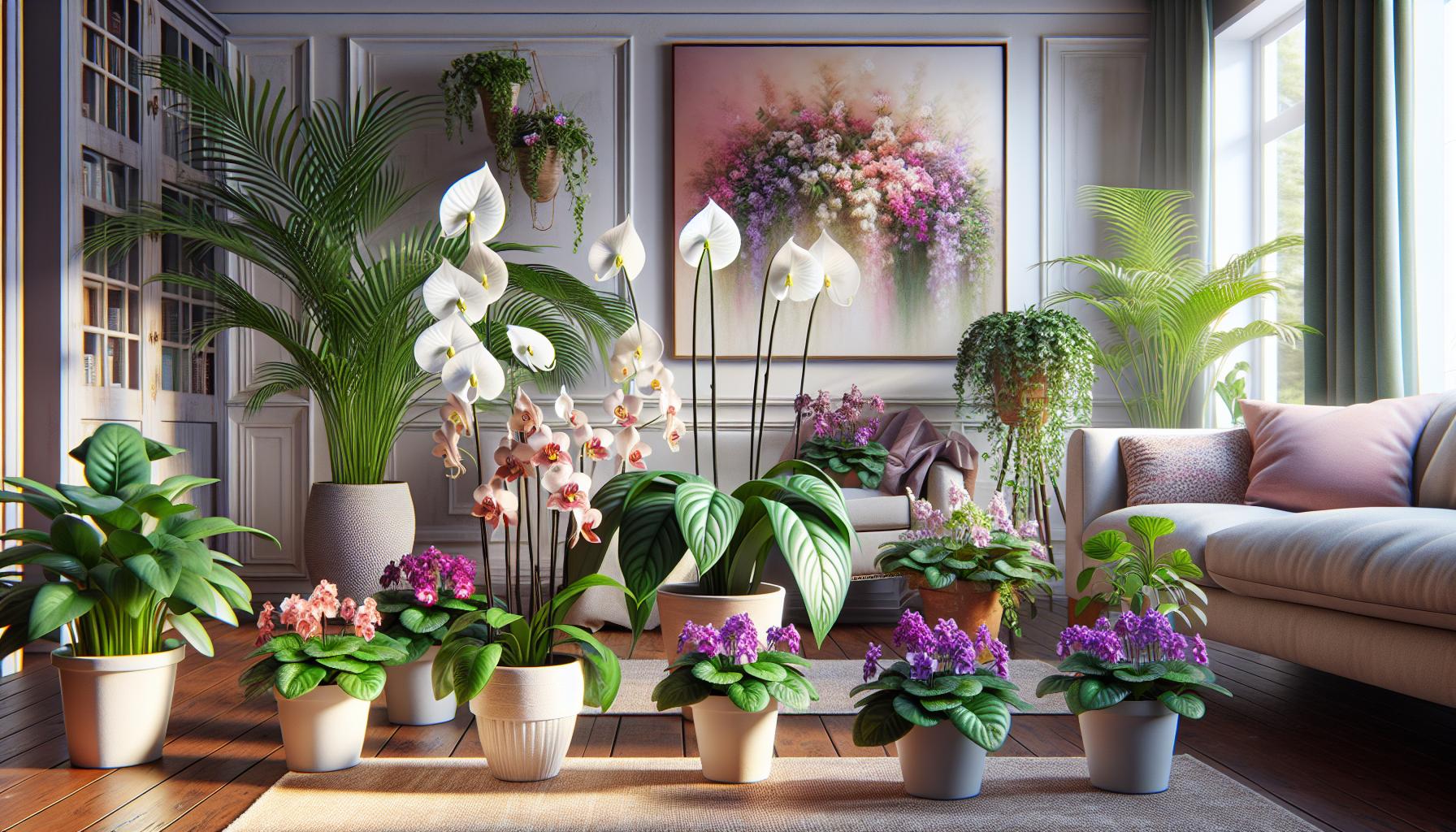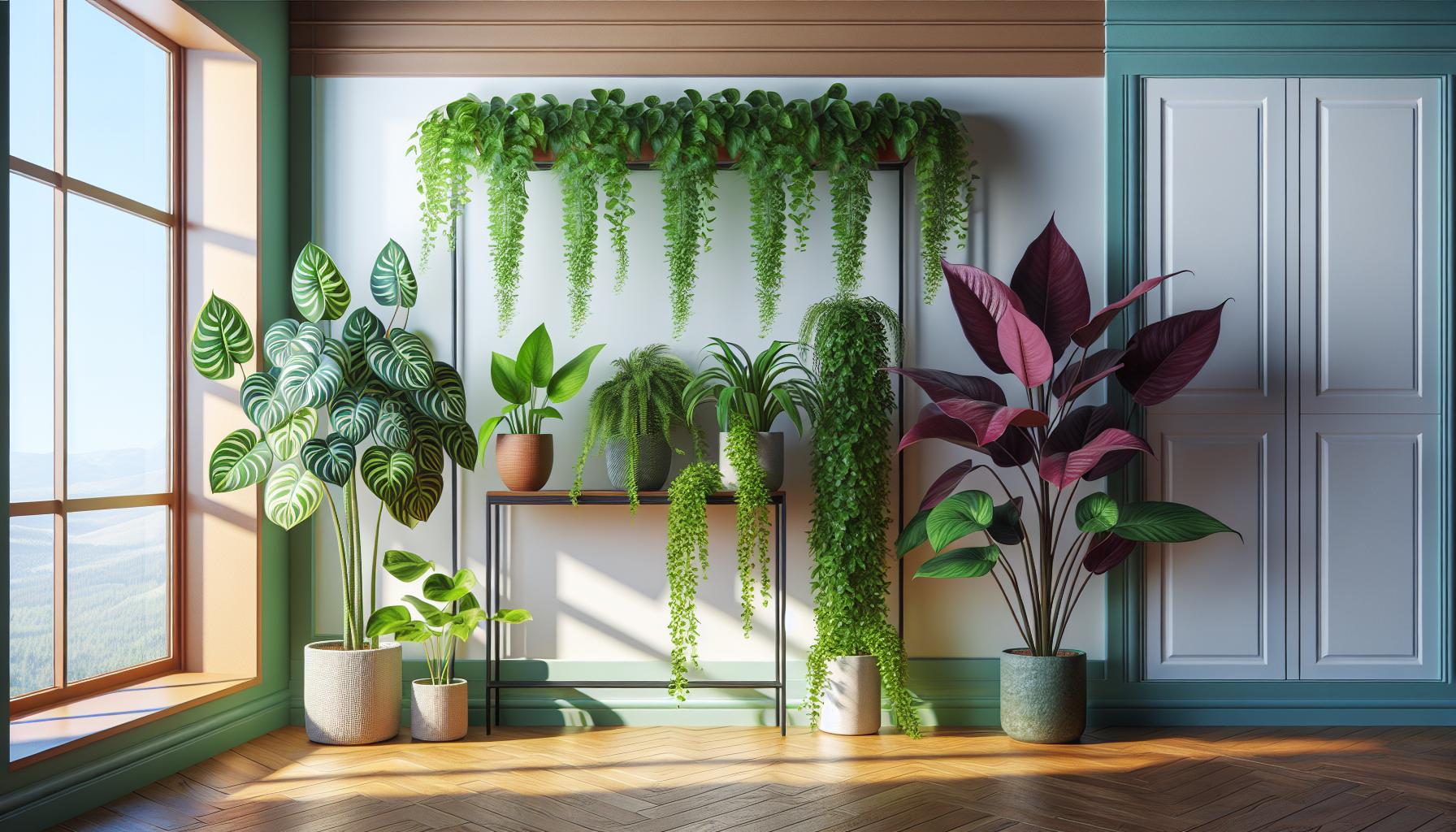
I’ve always believed that houseplants are more than just decorative elements – they’re living companions that transform any space into a vibrant sanctuary. From the dramatic fiddle leaf fig to the humble pothos these green friends bring nature’s beauty right into our homes.
As a plant enthusiast I’ve discovered there’s a perfect houseplant for every lifestyle and environment. Whether you’re a busy professional looking for low-maintenance options or an experienced plant parent ready for a challenge you’ll find countless varieties to match your needs. Some thrive in bright sunlight while others flourish in shady corners making it possible to fill every nook of your home with lush greenery.
Key Takeaways
- Indoor plants offer significant health benefits, including air purification, stress reduction, and improved concentration levels
- Low-maintenance options like Snake Plants, Spider Plants, and ZZ Plants thrive with minimal care and adapt well to various light conditions
- Flowering plants such as Peace Lilies, Orchids, and African Violets add vibrant blooms while maintaining air-purifying properties
- Air-purifying varieties like Pothos, Rubber Plants, and Boston Ferns effectively remove multiple indoor pollutants
- Statement plants including Monstera Deliciosa, Fiddle Leaf Fig, and Bird of Paradise create dramatic focal points in indoor spaces
- Proper care varies by plant type, with specific requirements for watering frequency, light exposure, and temperature ranges
Different Types of House Plants
House plants offer transformative advantages that extend beyond aesthetic appeal. Here’s how these green companions enhance our living spaces.
Physical and Mental Health Benefits
Indoor plants create measurable improvements in physical wellness through air purification. My research shows that plants like Snake Plants (Sansevieria) remove 87% of airborne toxins within 24 hours. Studies from NASA confirm that house plants reduce indoor air pollutants including:
- Absorb carbon dioxide while releasing fresh oxygen
- Filter volatile organic compounds (VOCs) from carpets furniture paint
- Remove airborne particles dust pollen
- Increase humidity levels by 5-10%
Mental health benefits include:
- Reduce stress levels by 37% according to workplace studies
- Improve focus concentration by 15% in home offices
- Boost creativity through biophilic connections
- Enhance mood through daily plant care interactions
Environmental Impact
House plants contribute to environmental sustainability through multiple pathways. Here are the key ecological benefits:
- Decrease indoor energy consumption by 20-30%
- Regulate room temperature reducing AC HVAC needs
- Minimize carbon footprint through natural air filtration
- Create microhabitats supporting indoor biodiversity
| Benefit | Measured Impact |
|---|---|
| Temperature Reduction | 3-5°F cooler |
| Humidity Control | 10-30% increase |
| Noise Reduction | 5 decibel decrease |
| Energy Savings | 15% reduction |
Low-Maintenance House Plants

Low-maintenance house plants thrive with minimal care requirements while adding natural beauty to indoor spaces. These resilient plants adapt to various light conditions with infrequent watering schedules.
Snake Plants
Snake plants feature tall, striking leaves with yellow borders that grow upright to 4 feet tall. I’ve found these plants survive in low to bright indirect light, requiring watering only every 2-3 weeks when the soil dries completely. Their sturdy leaves filter indoor air pollutants like benzene toluene with proven effectiveness rates of 87% within 24 hours.
Spider Plants
Spider plants produce long arching leaves with distinctive white stripes, creating cascading displays from hanging baskets. These adaptable plants tolerate temperatures between 60-75°F while thriving in moderate indirect light. I water my spider plants every 7-10 days, allowing them to generate multiple baby plantlets that dangle from stems like natural ornaments.
ZZ Plants
ZZ plants showcase glossy dark green leaves growing from thick rhizomes that store water for extended periods. Their drought-tolerant nature means they need watering just once every 2-4 weeks, making them perfect for offices or rooms with minimal natural light. These plants maintain their attractive appearance in low-light conditions where most other plants struggle to survive.
| Plant Type | Watering Frequency | Light Requirements | Max Height |
|---|---|---|---|
| Snake Plant | Every 2-3 weeks | Low to bright indirect | 4 feet |
| Spider Plant | Every 7-10 days | Moderate indirect | 2 feet |
| ZZ Plant | Every 2-4 weeks | Low to moderate | 3 feet |
Flowering Indoor Plants

Flowering houseplants transform indoor spaces with vibrant blooms throughout the year. These plants combine the air-purifying benefits of foliage plants with stunning flowers that create focal points in any room.
Peace Lilies
Peace lilies feature elegant white spathes rising above glossy dark green leaves. I’ve found they bloom 2-3 times per year in medium indirect light with watering every 7-10 days. These versatile plants grow 1-4 feet tall while removing 23 different air toxins including benzene formaldehyde.
Orchids
Orchids produce exotic blooms that last 2-3 months with proper care. I maintain my Phalaenopsis orchids in bark medium watering every 7-14 days with 70% humidity levels. These striking plants thrive in east-facing windows producing 1-2 bloom cycles annually with flower spikes holding 5-15 blossoms.
African Violets
African violets display clusters of purple pink or white flowers against fuzzy green leaves. I grow these compact plants under LED grow lights for 12-14 hours daily maintaining temperatures between 65-75°F. With regular fertilizing every 2 weeks these 6-8 inch plants bloom continuously producing 20-25 flowers per crown.
| Plant Type | Light Needs | Watering Schedule | Blooming Duration |
|---|---|---|---|
| Peace Lily | Medium Indirect | Every 7-10 days | 4-6 weeks |
| Orchid | Bright Indirect | Every 7-14 days | 2-3 months |
| African Violet | Bright Filtered | Every 5-7 days | Year-round |
Air-Purifying House Plants

Air-purifying house plants act as natural air filters, removing specific indoor pollutants through their leaves roots. These plants convert carbon dioxide into oxygen while absorbing harmful compounds like benzene formaldehyde xylene.
Pothos
Pothos plants remove 9 different air pollutants including carbon monoxide benzene. The vining plant grows 20-40 feet long with heart-shaped leaves in variegated patterns of green white yellow. I water my Pothos every 7-10 days maintain 60-80°F temperatures place it in bright indirect light. This hardy plant tolerates low light conditions adapts to various environments making it ideal for offices bedrooms living spaces.
Rubber Plants
Rubber plants (Ficus elastica) eliminate 12 common indoor air pollutants filter particulate matter. The glossy leaves grow 8-12 inches long develop a deep burgundy green color reach heights of 6-10 feet indoors. I water my rubber plant when the top 2 inches of soil feels dry maintain humidity levels between 40-60%. These plants thrive in bright indirect light require consistent temperatures between 60-75°F.
Boston Ferns
Boston ferns rank among the most effective natural air purifiers removing 14 airborne contaminants. The arching fronds span 2-3 feet wide create a lush cascade of fine-textured foliage. I mist my Boston fern daily water it twice weekly maintain humidity above 50%. These ferns prefer temperatures between 65-75°F partial shade filtered light conditions making them perfect for bathrooms enclosed porches.
| Plant Type | Pollutants Removed | Growth Size | Light Requirements |
|---|---|---|---|
| Pothos | 9 types | 20-40 feet long | Bright indirect to low |
| Rubber Plant | 12 types | 6-10 feet tall | Bright indirect |
| Boston Fern | 14 types | 2-3 feet wide | Partial shade |
Large Statement House Plants
Large statement house plants create dramatic focal points in interior spaces with their impressive size reaching heights of 6-10 feet when mature. These architectural beauties transform rooms into lush indoor jungles while purifying substantial amounts of air.
Monstera Deliciosa
The Monstera Deliciosa’s iconic split leaves span 18-36 inches wide in optimal conditions. I place my Monstera in bright indirect light 6-8 feet from windows, watering when the top 2 inches of soil feels dry. This tropical plant grows 1-2 feet annually with proper care, climbing support structures through aerial roots while maintaining 65-85°F temperatures.
Fiddle Leaf Fig
The Fiddle Leaf Fig displays large violin-shaped leaves measuring 8-15 inches long. I position mine in a spot with consistent bright indirect light 4-6 feet from east-facing windows, rotating quarterly for even growth. This finicky beauty requires 50-60% humidity levels, weekly watering when soil dries 2 inches deep, maintaining steady 60-75°F temperatures.
Bird of Paradise
The Bird of Paradise features dramatic paddle-shaped leaves growing 4-6 feet tall indoors. I provide mine with 6 hours of bright indirect sunlight daily, watering thoroughly every 7-10 days in summer months. These regal plants thrive in 65-80°F temperatures with 60% humidity levels, producing distinctive orange-blue flowers after 4-5 years of consistent care.
| Plant Name | Maximum Height | Leaf Size | Light Needs | Watering Schedule |
|---|---|---|---|---|
| Monstera Deliciosa | 10 feet | 18-36 inches | Bright indirect | Every 7-10 days |
| Fiddle Leaf Fig | 8 feet | 8-15 inches | Bright indirect | Weekly |
| Bird of Paradise | 6 feet | 18-24 inches | 6 hours bright indirect | Every 7-10 days |
Caring for Different Types of House Plants
House plant care varies significantly based on the plant’s natural habitat and growth patterns. I’ve developed specific care routines that optimize plant health while minimizing maintenance challenges.
Watering Requirements
Indoor plants require distinct watering schedules based on their species, size and environment. I follow these essential watering guidelines:
- Succulents & Cacti: Water every 14-21 days, allowing soil to dry completely between waterings
- Tropical Plants: Water every 7-10 days, maintaining consistently moist but not wet soil
- Flowering Plants: Water every 5-7 days during blooming periods, reducing frequency in dormancy
- Large Foliage Plants: Water every 10-14 days, using 1 cup of water per foot of plant height
- Air Plants: Mist 2-3 times weekly, with a 30-minute soak every 14 days
| Plant Type | Watering Frequency | Water Amount |
|---|---|---|
| Succulents | 14-21 days | 1/4 cup per 6″ pot |
| Tropicals | 7-10 days | 1 cup per 8″ pot |
| Flowering | 5-7 days | 3/4 cup per 6″ pot |
| Large Foliage | 10-14 days | 1 cup per foot height |
| Air Plants | 2-3 times weekly | Light misting |
- Direct Light Plants: Place 0-12 inches from south-facing windows (65-85°F)
- Bright Indirect: Position 1-3 feet from east/west windows (60-80°F)
- Medium Light: Set 3-6 feet from windows (65-75°F)
- Low Light: Place 6-8 feet from any window (60-75°F)
- Artificial Light: Use grow lights 12-16 hours daily at 6-12 inches above plants
| Light Level | Distance from Window | Temperature Range | Examples |
|---|---|---|---|
| Direct | 0-12 inches | 65-85°F | Cacti, Succulents |
| Bright Indirect | 1-3 feet | 60-80°F | Monstera, Fiddle Leaf Fig |
| Medium | 3-6 feet | 65-75°F | Peace Lily, Pothos |
| Low | 6-8 feet | 60-75°F | ZZ Plant, Snake Plant |
Perfect Plant For Every Home And Lifestyle
I’m amazed by how houseplants have transformed from simple decorative elements into essential components of modern living spaces. Whether you’re a beginner looking for low-maintenance options or an experienced plant parent seeking statement pieces there’s truly a perfect plant for every home and lifestyle.
From air-purifying champions like Snake Plants to stunning bloomers like Peace Lilies these green companions offer both practical benefits and visual appeal. I’ve found that understanding each plant’s unique needs is key to creating a thriving indoor garden that brings joy year-round.
I encourage you to start your plant journey with varieties that match your schedule and living space. Remember that even the most striking statement plants started as small additions to someone’s home. The right houseplant can transform not just your space but your daily living experience.
